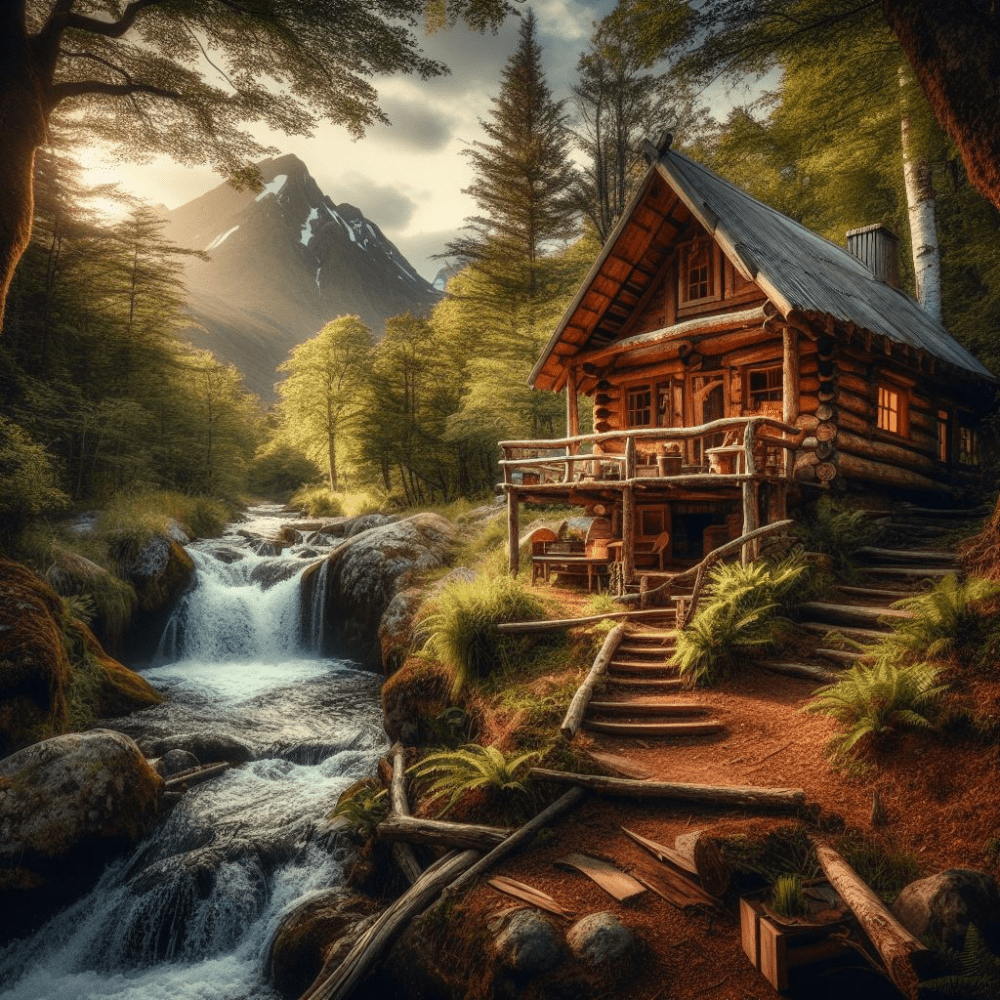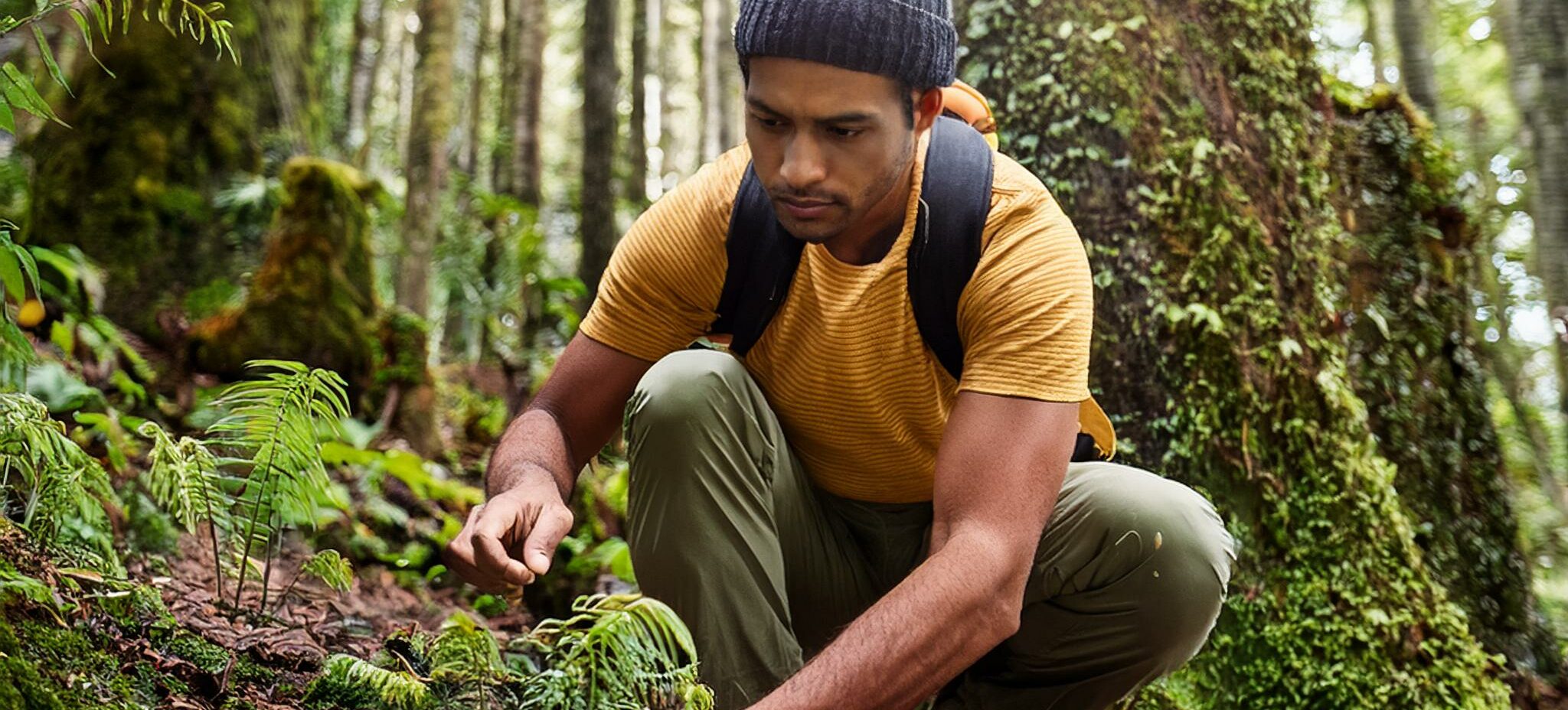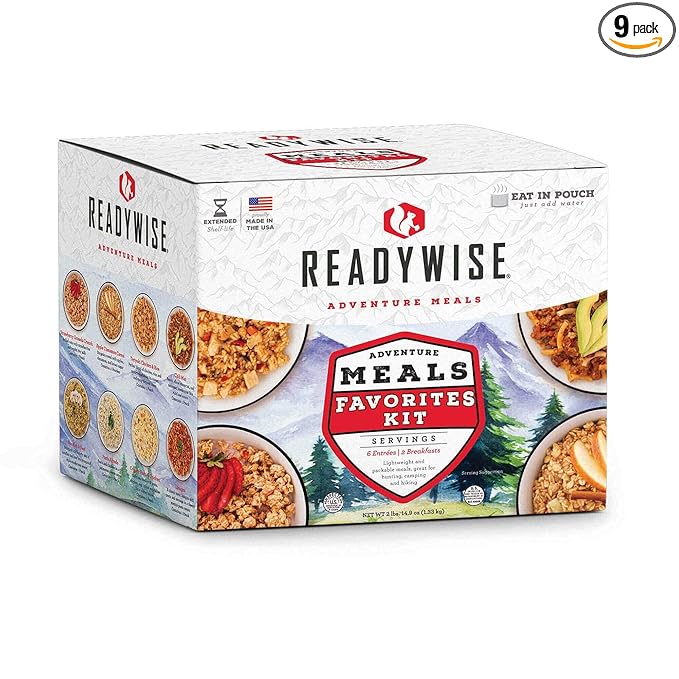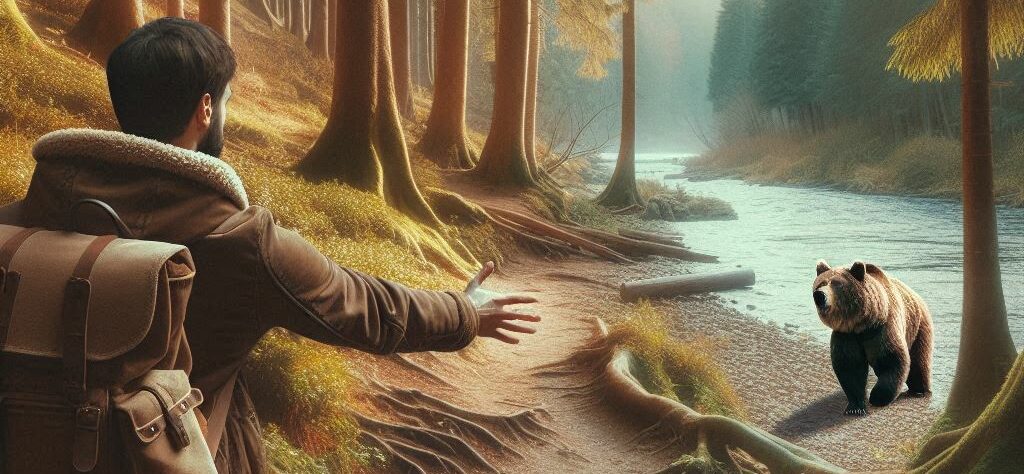When you’re lost in the forest, knowing your surroundings can mean the difference between finding food and a stomachache. Different forest types house distinct kinds of food sources, so take notice of your environment. Check for overarching characteristics like the density of trees, available sunlight, and the general moisture of the area; these clues help in identifying the type of forest you’re in. For instance, dense coniferous forests can offer tree nuts like pine nuts, while deciduous forests are rich in various berries and edible plants.
Identifying edible plants and berries is crucial. Berries that grow in bundles and have fine hairs are often edible, such as blackberries and raspberries. But beware of bright-colored berries, especially red and white ones, as they can be toxic. To make things more manageable, remember the saying, ‘white and yellow, kill a fellow; purple and blue, good for you (though even this has exceptions, so be cautious).’ Green berries can sometimes be safe but do more research when possible.
This Book Is A Must To Carry With You If You Go Hiking. Click Here To Take A Look.
The dangers of consuming unknown flora can’t be overstated. Some plants look harmless yet are extremely toxic. Familiarize yourself with common poisonous plants like poison ivy, hemlock, and deadly nightshade. These plants can cause anything from severe discomfort to life-threatening reactions. Always remember, if you’re not sure about a plant, it’s better to skip it. In an emergency, knowledge from field guides or survival manuals can be a lifesaver.
Having a mental map of your surroundings, the plant types, and potential hazards boosts your confidence and chances of finding safe food in the wild. So, the next time you head out for an adventure, a bit of prep about your destination’s natural environment can go a long way.
Hunting and Fishing Techniques
When edible plants and berries seem scarce, hunting and fishing can be valuable survival skills. You don’t need fancy gear to catch your next meal; some basic tools and techniques can do the job. If you have a survival knife or even just a pocket knife, you’re already ahead of the game. Sharp sticks can serve as spears, and vines make effective ropes.
Setting traps and snares is a methodical way to catch small game like rabbits and squirrels. For a simple snare, use a loop of string or wire. Place the loop on a known animal trail and secure the other end to a sturdy branch. If an animal steps into the loop, the string tightens, capturing it. Patience is key here. Check your traps regularly but avoid disturbing the area too much. Animals are sensitive to new scents and disturbances, which could make them avoid your traps altogether.
Fishing with improvised tools is another excellent technique. If you don’t have a fishing rod or hooks, you can create one. Use a sturdy branch as a rod. For hooks, bend a safety pin into shape or use thorns if you have no other choice. Wind a small vine or string around the rod, attach your hook, and use insects or worms as bait. Consider creating fish traps in shallow areas by arranging rocks to funnel fish into a small, enclosed space.
These hunting and fishing techniques require some practice, but don’t get discouraged. Even minimal success can provide essential nutrients and energy to keep you going. Keep trying and refine your techniques as you gain more experience in the wild.
Foraging for Nutritious Food
Searching for wild edibles goes beyond berries and small game. Forests are treasure troves of nuts, seeds, and mushrooms packed with nutrients. Keep your eyes peeled for recognizable options like acorns from oak trees, which can be roasted. Make sure to leach out their tannins by soaking them in water to avoid bitterness.
Roots and tubers are hidden gems when it comes to wild edibles. Look for plants like cattails near water bodies. Almost every part of a cattail is edible, from its roots to its young shoots. Dandelion roots are another option. They have a slightly bitter taste but are packed with vitamins and minerals.
Nutrient-rich food sources often have some tell-tale signs. Plants with dull, dark green leaves are likely to be nutritious. Edible ferns like fiddleheads are commonly found in moist, shaded areas and are a good source of vitamins.
Mushrooms can be a tricky but rewarding find. Stick to easily identifiable species like morel mushrooms, which have a distinctive honeycomb appearance. Avoid any fungi with white gills, a skirt or ring on the stem, or a bulbous base as these are common features of toxic varieties.
Foraging expands your menu of survival options and gives you the energy boost you need. Constantly assess the safety and nutritional value of what you gather. It’s not just about filling your stomach but ensuring you’re feeding your body well.
Safety and Sustainability Practices
Safety is a must when foraging. Knowing how to avoid poisonous flora and fauna can prevent a bad situation from getting worse. Plants like poison hemlock or mushrooms like the death cap might look harmless, but ingesting them can be deadly. Basic rule? If you’re not 100% sure it’s safe, don’t eat it. Keep an eye out for animals’ behavior around plants; if you see multiple animals avoiding a particular plant, there’s usually a reason.
Sustainable foraging is equally important. Taking more than what you need affects the forest ecosystem. Harvest responsibly by only taking what you can consume and leaving enough for wildlife. When it comes to plants like berries or nuts, pick in different areas to avoid depleting one single spot. Rotating your foraging locations ensures a constant food supply for you and the animals that rely on these resources.
Leave No Trace principles apply to food gathering, too. After you’ve set traps, fished, or foraged, make sure to clean up. Avoid disturbing the ground too much and never leave behind non-biodegradable materials like plastic wrappers or cans. Maintaining the health of the forest ensures that it remains a viable resource for everyone, including future adventurers.
Learning these safety measures and sustainable practices guarantee not just your survival but the preservation of the forest. When you respect your environment, you’re more likely to see it respect you back, providing the sustenance you need to navigate your way out. Safety isn’t just about what you avoid; it’s about the practices you follow to keep the wild as welcoming as possible.
Below is a short video I created just to sum up how to find food in the forest.







Hey there! I just wanted to drop a quick note to say how awesome your article on finding food in the forest while hiking is. I loved the detailed tips on identifying edible plants and the emphasis on safety—it’s super helpful for someone like me who’s not a seasoned outdoorsman. The part about recognizing which berries are safe to eat and which ones to avoid was especially eye-opening. Do you have any personal favorite foraging spots or tips for beginners who might be nervous about trying this for the first time? Thanks for sharing such valuable info!
Hi Bob,
Thank you for your comments about finding food in the forest. My best suggestion to anyone who wants more knowledge about what to eat or not, would be to purchase the book I recommend in my article. This would give anyone a great resource of what is safe to eat if you get lost.
My next suggestion is to stay on designated trails and to not wonder off the main path. This is where many people get into trouble. I have done this twice and I did find myself lost temporarily and it is not a good feeling. Luckily, I was able to find my way back fairly quickly.
Thank you again for your comments.
Mike Powers
Cabin Living Today